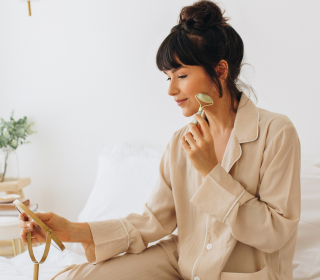What does your wee say about your health

Pale straw. Rusty orange. Lime green. No, not colour swatches from Dulux’s latest collection, but rather the colours that can be left in the toilet after a call of nature. So, what’s causing that magenta tinge? And is it something to worry about?
“There are different aspects of urine,” says Ramesh Thurairaja, consultant urological surgeon at The London Clinic. “The smell, colour, consistency, volume and frequency all give an idea of whether it’s normal or if something’s not quite right.”
Wee is essentially the body’s way of managing your metabolism and blood pressure, getting rid of any excess by-products. While the kidneys are filtering the body’s blood, they produce waste fluid, which passes via the ureter to the bladder, where it is stored and topped up until you get the urge to go.
MELLOW YELLOW
Healthy pee is 90-95% water, with the rest made up of hormones, protein, toxins, salts and organic compounds. You should go between four-to-eight times per day and the total volume
can be anything between 800-to-2,000ml, depending on what you’ve eaten and drunk.
“People assume we only pee what we drink, but a lot of foods – soup, fruit, vegetables – contain liquid,” adds Ramesh. “The frequency and amount can also change, depending on the time of the year and conditions. If it’s hot, you’re going to be losing more water through sweating and breathing, therefore weeing less.”
Colour is also a clear indicator of healthy pee. A by-product of haemoglobin (a protein found in the body’s red blood cells) called urochrome gives urine its yellow tinge. When dehydrated, the kidneys try to conserve water, resulting in a darker shade of wee. “Anything from almost colourless through to a bright yellow or amber is considered normal,” says Ramesh. “If it falls outside these parameters, it’s a warning something bigger might need to be addressed.”
WATER WORKS?
Changes in your wee routine can also be caused by a variety of other factors: the antibiotic rifampicin and the blood thinner warfarin will turn your pee orange; urine that is cloudy and stings are symptoms of a urinary tract infection, while a sweet smell could be a sign of diabetes.
Conditions such as diabetes or heart and kidney problems can also cause you to pee more, too. “If there’s a clear difference between daytime and night-time activity, that could be caused by an endocrine or hormonal issue, such as heart failure,” explains Ramesh.
A daytime symptom of heart failure is swollen legs. When you lie down at night, the fluid in the legs moves up into the upper half of the body. The heart produces a hormone in reaction to this, which tells the kidneys to produce more urine. This is why the condition can lead to more night-time trips to the bathroom. Snorers tend to get up to pee more often, too.
TOILET TALK
“Ultimately, these things are variable and come down to what you’re eating, hydration status, medications and certain conditions,” concludes Ramesh. “If you are unsure about your pee, book an appointment with your GP.”
But remember; if you see a purple tinge in the loo, there’s no need to panic straight away. It could just be last night’s beetroot risotto.








